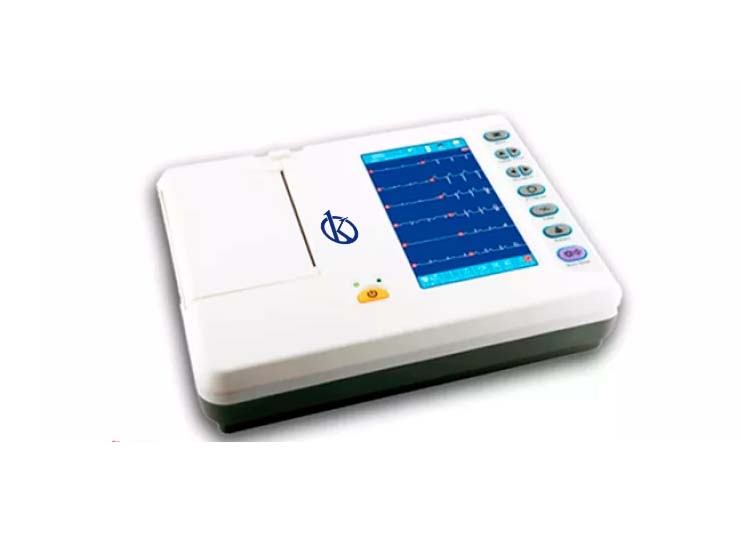It is a specialized medical team that prints the record of cardiac activities, which reflects positive and negative waves, driven by electrodes located in the chest cavities on the patient’s body. This mechanism records whether the heart has any damage, the rate of palpitations or any abnormalities, as well as the effects left by drugs intended for the heart and the position and size of the heart chambers.
Its functions capture and print the electrical impulses of the heart of twelve leads per record, which are taken in the selected sequence and can be determined automatically. They also offer numerous advantages, as they allow to compare the records of multiple leads during the same heartbeat, greatly facilitating interpretation and improving the accuracy of the diagnosis accordingly.
Characteristics of an Electrocardiograph
This innovative instrument has a protection circuit, calibration signal, preamplifier, insulation circuit and driver amplifier, which correspond to a biopotential amplifier. It has a connection from the right leg, which creates an active earth isolated from the electrical earth of the circuit, in order to reduce the voltages it receives, and thus increase its safety. It also has a deviation selector, where the module approves the contribution of each electrode through resistors, achieving the derivation of interest.
By using these equipment, it detects the following signals:
- Memory system: This is a memory where the signal is stored before being printed together with the data that is entered manually via a digital keyboard. An analog digital converter is used to convert the signal.
- Micro controller: This component controls each procedure performed by the electrocardiograph.
- Recorder: is in charge of printing the signal that the electrodes pick up, that is, the result of the electrocardiogram.
Functions of the Electrocardiograph Operator
The task of operating the equipment is one that is capable of enforcing a simple protocol, which simply consists of the patient being kept in a resting position on the stretcher and connecting a series of electrodes with suction cups or adhesives connected to the electrocardiograph. The patient does not have to do any prepreparation and during the test just be relaxed and breathe normally.
After registration, the operator should disconnect the equipment and remove the electrodes, then help the patient remove the remaining stickers, and finally help the patient get out of bed and dress the patient, if needed.
The information required by the electrocardiograph is very useful, because by recording the electrical activity of the heart can detect the rhythm of the heart, the frequency of the same, if there is an increase in the size of chambers. It can help diagnose conditions such as arrhythmias, cardiomyopathy, angina, or infarction.
Abnormal results may be due to one of the following:
- Myocardial deterioration.
- Arrhythmias.
- Imbalances in the amount of calcium, potassium or other substances in the blood.
- Congenital heart disease.
- Increased heart volume.
- Sequelae from a past cardiac arrest.
- Cardiac arrest in the moment.
- Poor blood supply to the arteries.
Electrocardiograph in KALSTEIN
We at KALSTEIN, have 12-channel ECG Electrocardiographs is an electrocardiograph that can collect 12-lead ECG signals simultaneously and print ECG waveforms with a thermal printing system. The electrocardiogram is commonly used to detect abnormal heart rhythms and to investigate the cause of chest pains. An electrocardiogram records the electrical activity of the heart. The heart produces small electrical impulses that travel through the heart muscle to cause the heart to contract. These impulses are detected by the electrocardiograph.
We have YR models, with 7” touch screen, Supports Ecg analysis capabilities, 12 standard conductors, input circuit current ≤0.0.05μΑ, automatic anti-baseline drift, paper speed 12.5 mm/s, 25 mm/s, 50 mm/s. For more information, visit us HERE We are certified manufacturers, we have professionals willing to offer you the best guidance, so that your purchase is your best choice and we offer the best prices in the market, accessible that fit your needs. Follow us on HERE

